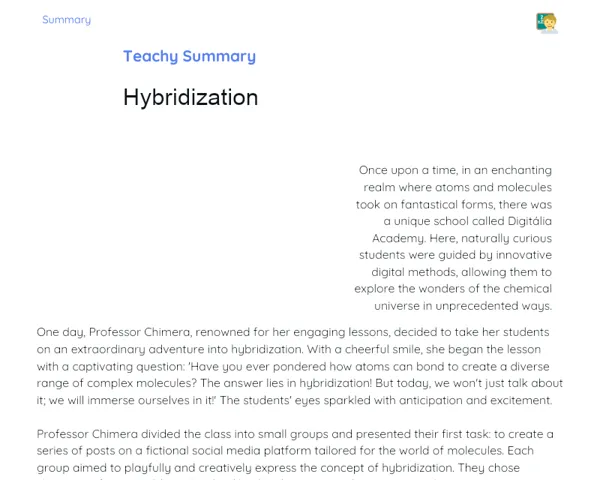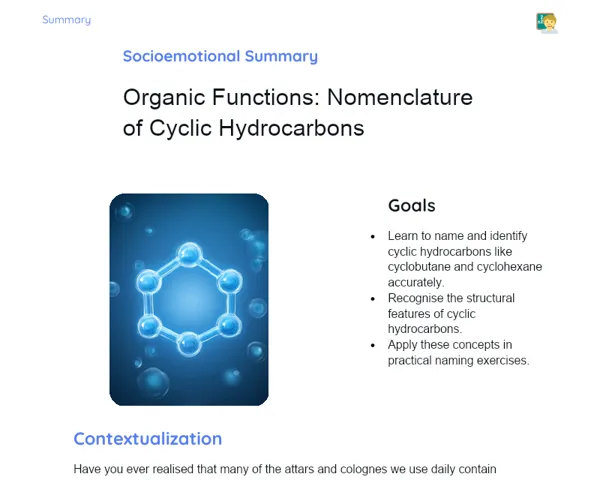Summary Tradisional | Concentration Units: Molarity
Contextualization
Molarity is one of the principal ways to express the concentration of chemical solutions in both academic and industrial settings. It is defined as the ratio of the number of moles of a solute to the volume of the solution in litres. This concept is key in chemistry for preparing solutions and conducting reactions as it provides an accurate measure of the amount of substance dissolved in a given volume of solvent.
In our everyday life, we encounter chemical solutions in various areas such as in medicine, food preparation, and water purification. For example, ensuring the correct dosage of medicines depends on the precise concentration of the solution administered, and the chlorination of drinking water requires careful calculation of the chlorine needed to eliminate harmful germs without causing any side effects. Therefore, knowing how to calculate and apply molarity is fundamental to maintaining the safety and efficiency of many processes and products we use on a daily basis.
To Remember!
Definition of Molarity
Molarity (M) is a way to measure the concentration of solutions by expressing it as the ratio of the number of moles of a solute to the volume of the solution in litres. The formula to compute molarity is M = n/V, where 'n' denotes the number of moles of the solute and 'V' is the volume of the solution in litres. This definition is crucial in many chemical applications, allowing for a clear depiction of the quantity of substance present in a specific volume of solvent.
In laboratories across the country, molarity is routinely used to prepare solutions of known concentration, which is essential for carrying out controlled experiments and chemical reactions. Moreover, it helps in comparing different solutions and standardising chemical processes. For example, when preparing a sodium chloride (NaCl) solution for an experiment, having knowledge of the molarity helps in calculating the exact amount of salt required to reach the desired concentration.
Understanding molarity is equally important in industries where precision in solution concentration can influence the quality and safety of products. In pharmaceutical production, for instance, the right dosage of active ingredients depends heavily on the molarity of the solutions. Similarly, in the food and beverage sector, the concentration of additives and preservatives needs to be strictly controlled to ensure consumer safety.
-
Molarity is the ratio of the number of moles of solute to the volume of the solution in litres.
-
Molarity formula: M = n/V.
-
It is essential for preparing solutions and carrying out chemical reactions.
Calculating the Number of Moles
To determine the molarity of a solution, the first step is to calculate the number of moles (n) of the solute. This can be done using the mass (m) of the solute and its molar mass (M) with the formula n = m/M. The molar mass is a specific property of each substance and can be found in the periodic table. For instance, the molar mass of sodium chloride (NaCl) is about 58.44 g/mol.
To illustrate, consider dissolving 10 grams of NaCl in a solution. Using the molar mass, the number of moles can be computed as: n = 10 g / 58.44 g/mol, which is approximately 0.171 mol. This value signifies the amount of NaCl in moles, a fundamental unit in chemistry for expressing substance quantity.
A clear understanding of how to calculate the number of moles is vital for solving molarity problems, as this forms the initial step in the process. This knowledge also finds application in other areas of chemistry such as stoichiometry and chemical equilibrium, where reactants and products are often measured in moles.
-
The number of moles is computed using the formula n = m/M.
-
Molar mass is unique to each substance and is available on the periodic table.
-
Determining the number of moles is an essential step in solving molarity problems.
Calculating the Volume of the Solution
For molarity calculations, it is equally important to know the volume of the solution, which must be expressed in litres. Often, volumes are given in millilitres (mL) and need to be converted to litres (L) to apply the molarity formula correctly. The conversion is straightforward: 1 litre is equal to 1000 millilitres, so you simply divide the volume in millilitres by 1000.
For example, if a solution has a volume of 250 mL, converting this to litres gives: 250 mL / 1000 = 0.25 L. This conversion is crucial because the molarity formula requires the volume in litres; any mistake here can lead to an incorrect molarity value, thereby affecting the precision of your results.
Furthermore, measuring the volume accurately is important to ensure reliable results. In laboratory practice, instruments such as pipettes, graduated cylinders, and volumetric flasks are commonly used for accurate volume measurements. Precise volume measurement becomes especially critical in experiments where even slight deviations can significantly affect the outcome.
-
The volume of the solution should be given in litres for the calculation of molarity.
-
Conversion from millilitres to litres: 1 L = 1000 mL.
-
Accurate measurement of volume is key to obtaining precise results.
Practical Examples and Applications
The practical aspect of molarity can be understood through worked examples. For example, consider a solution prepared by dissolving 5 grams of NaCl in 500 mL of water. First, calculate the number of moles of NaCl: n = 5 g / 58.44 g/mol, which is approximately 0.086 mol. Next, convert the volume from millilitres to litres: 500 mL / 1000 = 0.5 L. Finally, apply the molarity formula to get: M = 0.086 mol / 0.5 L = 0.172 M.
Another example could involve preparing a sulphuric acid (H₂SO₄) solution of a desired concentration. Suppose we need 1 litre of a 2 M solution from concentrated acid. We first calculate the number of moles required using the equation: n = M × V = 2 mol/L × 1 L = 2 mol. Then, using the molar mass of H₂SO₄ (98.08 g/mol), the required mass would be: m = n × M = 2 mol × 98.08 g/mol = 196.16 g.
These examples show how molarity is applied practically to prepare solutions with specific concentrations. The ability to calculate and work with molarity is essential for chemistry students and professionals alike, as it enables controlled chemical reactions and precise solution preparation. Moreover, this understanding is invaluable for crafting experiments in laboratories and real-life industrial applications.
-
Example: Calculating the molarity for a NaCl solution in 500 mL of water.
-
Preparation of sulphuric acid solutions with defined concentrations.
-
Demonstrates the practical use of molarity in both laboratory and industrial contexts.
Key Terms
-
Molarity: The ratio of the number of moles of solute to the volume of the solution in litres.
-
Number of Moles: The quantity of substance expressed in moles, determined using the formula n = m/M.
-
Volume of Solution: The measure of the solution's volume, which must be converted to litres for molarity calculations.
-
Molar Mass: A distinct property of a substance representing the mass of one mole of that substance.
Important Conclusions
In this session, we discussed the concept of molarity — defined as the ratio of the number of moles of a solute to the volume of the solution in litres — and used the formula M = n/V for its calculation. We looked into how to accurately compute the number of moles from the mass of a solute and its molar mass, as well as the importance of converting volumes from millilitres to litres to ensure accuracy in the results.
We also went through practical examples, such as the preparation of sodium chloride and sulphuric acid solutions, to highlight the significance of molarity in our laboratories and industries. A solid grasp of molarity is critical not only for conducting controlled experiments but also for ensuring the quality and safety of chemical products, which impacts areas like medicine and water purification.
Molarity plays a crucial role in many everyday applications, and understanding its computation helps in accurately describing solution concentrations. This understanding is fundamental for advanced studies in chemistry, and I encourage students to explore this topic further.
Study Tips
-
Revisit the concepts of molarity, the calculation of the number of moles, and unit conversions, using practical examples to reinforce learning.
-
Work on different molarity problems involving various substances and solution volumes to build confidence in your calculations.
-
Consult additional resources such as chemistry textbooks and online materials for more detailed explanations and extra exercises on molarity and solution concentration.



